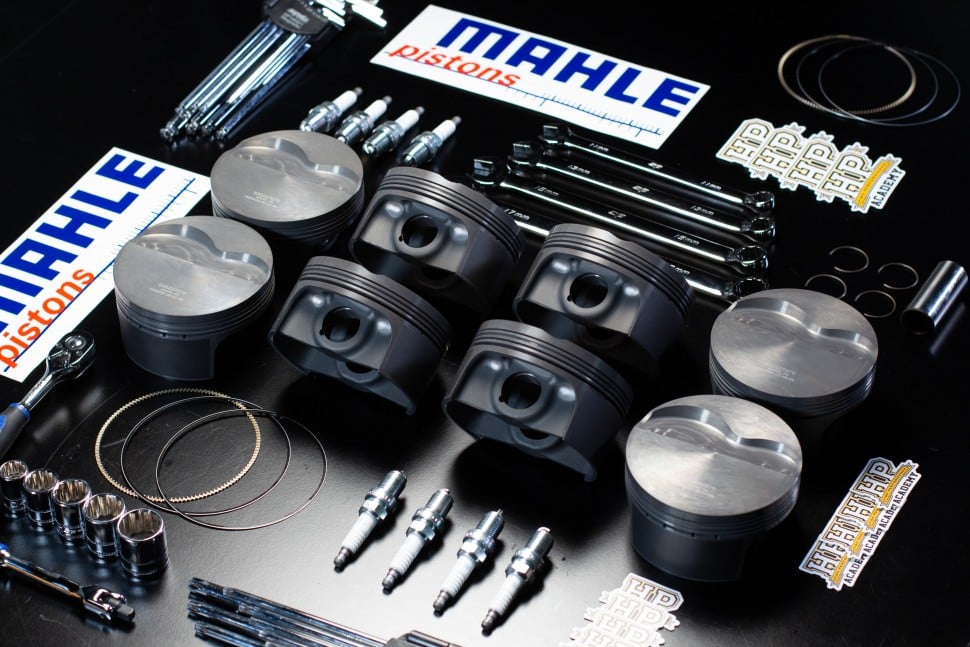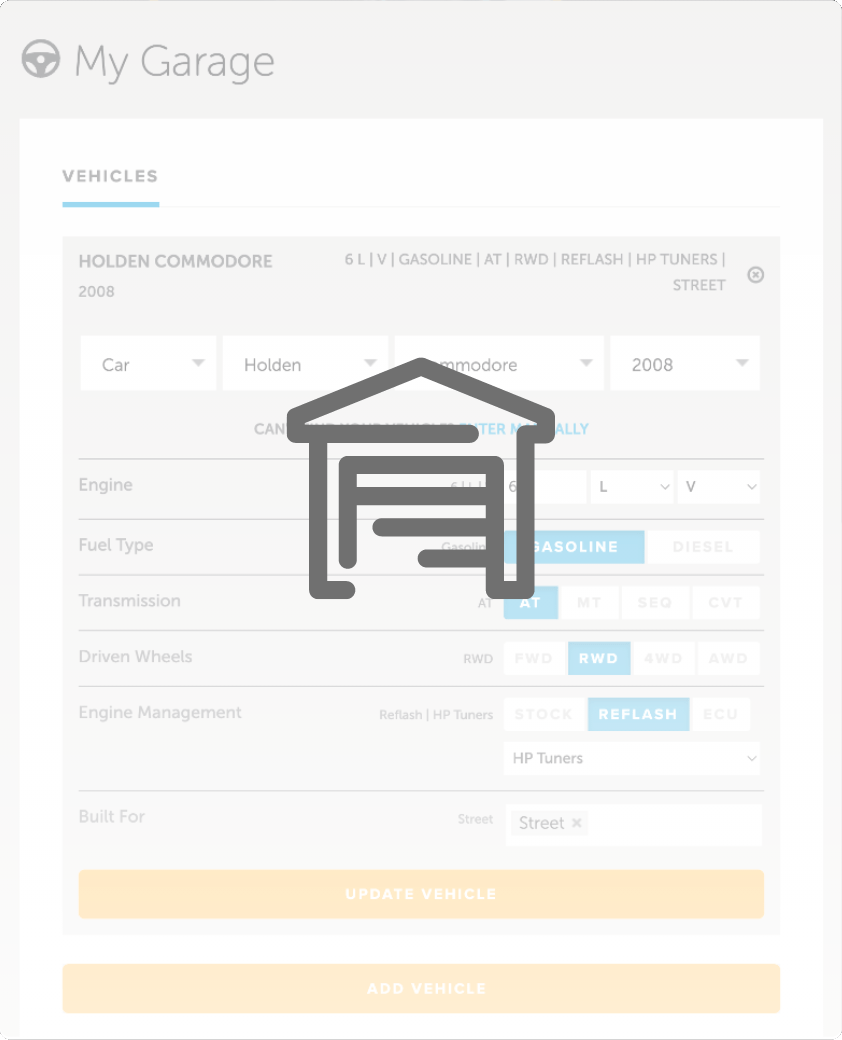| 00:00 |
Now, we know what we're trying to solve and achieve and a rough idea of how we're going to do it, it's time to start the practical work and get prepared for the design and modelling stage.
|
| 00:10 |
The first thing we need to do is take measurements from the CRX and components, although this will be somewhat limited as we'll be using 3D scans as a reference to model around.
|
| 00:21 |
Measurements between the chassis pickup points for the subframe will be useful for double checking our design as they are critical to it fitting correctly, but will also help us scale our 3D scans to the correct size.
|
| 00:33 |
With the current subframe still in the car, we took measurements of the location of all the suspension pickup points so we could map out the suspension geometry in our model space.
|
| 00:45 |
With the car sitting at ride height, the lower control arms and caster arms are parallel to the ground.
|
| 00:50 |
This means we can simplify the process and only measure in a single plane as all of the points of interest are level and we'll align them with our scans in Fusion 360 soon.
|
| 01:03 |
We can measure from the centre of each bushing or ball joint on the subframe and the traction bar where the lower control arms and caster arms mount, finding their spacing at 650 and 675 millimetres respectively.
|
| 01:15 |
We also need to measure the distance between the subframe and traction bar mounts in the fore and aft direction which is 560 millimetres.
|
| 01:26 |
We can assume the suspension is symmetric from left to right and measure the length of the lower control arm at 370 millimetres.
|
| 01:33 |
The coilover mounts to the lower control arm 210 millimetres from the chassis pickup point and this point is 550 millimetres from the centre of the ball joint for the caster arm on the traction bar.
|
| 01:47 |
With all of this info we can transfer this into Fusion 360 within its own design file and we'll bring this into the main design file we create as an external component soon.
|
| 01:59 |
This is just a matter of creating a sketch on the top plane, the origin will be directly between the points for the lower control arms on the subframe.
|
| 02:08 |
From here we can use the line tool and our dimensions to map out all of the suspension points in space relative to our references.
|
| 02:16 |
We'll draw lines from the caster arm locating point on the traction bar through the lower control arm to subframe point and extend this further towards the rear of the vehicle.
|
| 02:26 |
The new subframe mount for the rear caster arm setup will need to lie on this line to maintain the suspension kinematics, but it should be noted that any change in the length of this arm, which is inevitable, will have an impact on this to some extent, we're just trying to minimise it.
|
| 02:43 |
Moving on to the CRX chassis, we'll take measurements between each pair of horizontally opposed subframe mounting holes and then the difference in height between the surfaces of the mounting points on each side.
|
| 02:57 |
Additionally, since we'll be incorporating a 3D scan of the engine and gearbox to assemble in the engine bay, we'll take some measurements to understand its position.
|
| 03:07 |
This could also be achieved with a scan of the engine in the engine bay and then use this to align the engine and engine bay scans but it's good to have measurements to double check its position.
|
| 03:20 |
We'll move on to the 3D scans now, for this work we'll be using a Peel 2-S scanner, but this is of course possible with a smartphone, albeit with a compromise in resolution and accuracy.
|
| 03:32 |
Or simply without 3D scans at all, we'll just need to take much more measurements and possibly have to create representative models in CAD.
|
| 03:41 |
Aside from the obvious accessibility limitations around 3D scanning, the process is relatively straightforward.
|
| 03:48 |
Inside the Peel scanning software, we can start a new scan and move around the chassis, capturing all areas of interest from as much angles as possible.
|
| 03:59 |
The only trick is staying within the range of the scanner and moving smoothly.
|
| 04:03 |
Some reflective surfaces can benefit from matting sprays and tracking targets can also help the scanner keep its bearing as we move around the chassis.
|
| 04:12 |
The main areas we want to focus on are naturally around the mounting holes for the subframe but also along the chassis rails, up in the engine bay and also around the traction bar so we can use this to align our suspension geometry sketch.
|
| 04:27 |
After we've captured all the data we require, we can then create a mesh from this and then save it to a suitable location.
|
| 04:35 |
In another design file in Fusion 360, we can insert the mesh, setting the unit type to millimetre and then we need to check the scale using the measure inspection tool and compare this to our physical measurements.
|
| 04:49 |
This should be correct and accurate, but if it's not, we'll need to rescale the mesh to correct the size.
|
| 04:56 |
It's good to check in multiple directions to make sure the mesh isn't distorted, as if it is, we'll probably need to retake the 3D scan.
|
| 05:04 |
All is looking good in this case, so next we can enter the create form toolbar and use the plane through three points tool to create some planes that will help us align everything when we bring it all together.
|
| 05:16 |
This is as simple as selecting three points while separated on a flat surface.
|
| 05:22 |
If we sketch on one of the planes in line with the chassis mounting points, we can place circles in line with the mounting holes.
|
| 05:30 |
Then if we use a construction line between their centres, we can find the centre line of the chassis.
|
| 05:36 |
After selecting the 3D sketch preference in the sketch palette, we can sketch another two construction lines perpendicular to each other from this midpoint on the first construction line.
|
| 05:48 |
This essentially just gives us three points from the ends of the lines in all three dimensions.
|
| 05:54 |
So we can use the plane through three points tool to construct three perpendicular planes and this will allow us to fully align the scan with the workplace coordinate system, as well as any other components we'll be bringing in.
|
| 06:07 |
Then we can save this design file, open a new one, which will be the main file that we work in, and insert the scan component.
|
| 06:15 |
From here we can use the align function to line up the 3D scan of the chassis with our default origin planes with the intention of centring it in the workspace and making it level.
|
| 06:27 |
Ideally, we'll have the chassis aligned with the default coordinate system so the right plane runs directly down the centre line of the chassis, the top plane is aligned with one of the subframe mounting surfaces, and the front plane is also aligned with the corresponding subframe mounting holes.
|
| 06:45 |
This will make our life a little easier when modelling the subframe as we can use constraints like vertical and horizontal on our sketch features.
|
| 06:53 |
When we're happy with the location we can ground the component so it doesn't move and as we add each additional scan we can also ground these or create a rigid group.
|
| 07:04 |
We'll complete all the same work for the 3D scan of the original subframe with the original steering rack in place.
|
| 07:15 |
Again, sketching on the mounting plane, lining up circles with the holes and using a 3D construction line sketch to mark out the points for three perpendicular planes.
|
| 07:33 |
We can then save this component.
|
| 07:45 |
And bring this into our design file, lining it up in the correct mounting location.
|
| 07:50 |
The reason we did this separately is simply so we can hide it from the model when creating the new subframe but still have it for reference when necessary.
|
| 08:00 |
The new steering rack, which is the exact same item, just the manual non-assisted version is also scanned separately and then lined up with the original steering rack in the subframe.
|
| 08:11 |
To do this some planes are required on the fixture points but also an axis down the centre of the steering rack.
|
| 08:19 |
Making this axis involves creating a plane directly through the rack at two well divided points.
|
| 08:25 |
Under the mesh toolbar we can then select create mesh section sketch then edit the sketch in the timeline immediately before this feature.
|
| 08:35 |
We could choose to fit curves to the mesh section or alternatively use the circle tool and create a circle matching the cross section of the steering rack.
|
| 08:45 |
With a circle on each plane we can use the axis through two points tool and create an axis down the centre of the rack.
|
| 08:53 |
Having an axis like this for each rack will allow us to align them.
|
| 08:57 |
At the same time we can use the circular sketch from the rack to create a cylindrical extrude and model a representation of the steering rack housing with a solid body that also steps up in diameter closer to the end.
|
| 09:12 |
This will help us when it comes time to mount the rack with a clamp later on.
|
| 09:17 |
Then we'll just save this component and insert it into the main design file.
|
| 09:21 |
From there we need to use a move tool to drag the rack into alignment with the original steering rack in the original subframe.
|
| 09:29 |
Aligning the racks and then setting the pivot point for the move tool on the centre axis makes this a lot easier and grounding the component locks it in place.
|
| 09:39 |
Next, we can insert our suspension geometry sketch as a new component into the design and then use the align and moves tools to centre and align the points with the suspension mounting locations on the traction bar and factory subframe.
|
| 09:55 |
Finally, our scan of the engine and gearbox needs to be brought in and aligned in the position that we measured earlier.
|
| 10:03 |
In the case of the CRX, during this project we were actually making the change over from a factory modified gearbox to a Holinger sequential box.
|
| 10:12 |
Since we didn't have the Holinger on hand to scan yet, the supplier was able to provide us with a model of the gearbox that we could assemble to our engine scan in CAD, so we could be sure that our subframe would work with the new setup.
|
| 10:27 |
At this point we now have the 3D scans of our chassis, factory subframe, steering rack and engine all in place, and also sketch points showing the location of suspension points.
|
| 10:38 |
All of which we can use as a reference for designing our subframe to ensure that it fits with the chassis mounting points, clears the drivetrain and maintains the correct suspension geometry.
|





